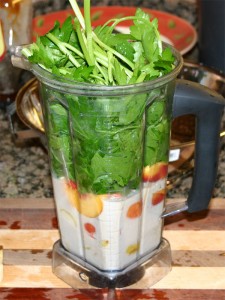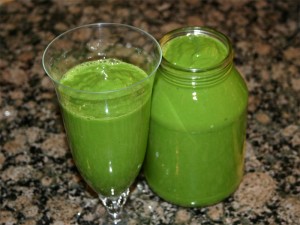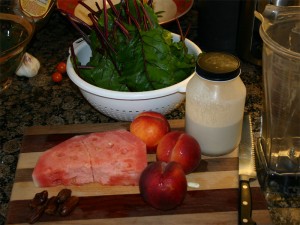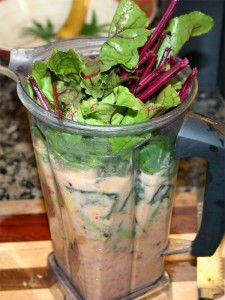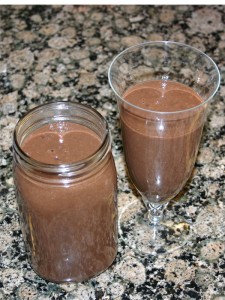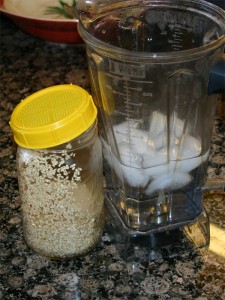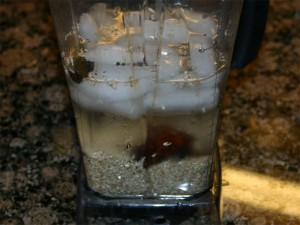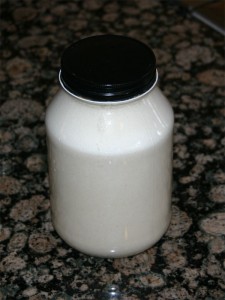The thing that makes this smoothie outstanding is the sesame milk base. Sesame milk is so easy to make and it adds a bitter sweet full bodied texture to the smoothie that doesn’t happen if you simply use water. If you’ve never made sesame milk before, you can read about it in a previous posting here.
I guess the other part I like is the garden fresh parsley! Yes, out of all the greens that I blend up into breakfast food, parsley is my favorite. But it’s not spinach! Everyone loves spinach. Parsley takes a little warming up too, if you know what I mean. Its flavor is much stronger and, if you get the standard curly parsley at the store, it always leaves your mouth feeling like it’s eaten something a little too strong.
That doesn’t happen with this garden parsley. It’s fresh and smooth tasting. Every time I visit the garden, I can’t help but pinch off a couple leaves and chomp them down. I get no negative reaction and my breath is left parsley fresh!
If I could grow more parsley, I’d make it my green of choice.
Recipe:
- 2 peaches
- 3 little pears
- 1 good size bunch parsley
- 1 ½ cups sesame milk
Notice I didn’t need to add dates to this smoothie! I LOVE it when the fruit really is ripe and sweet. It makes a huge difference on the resulting flavor of the smoothie. If I haven’t already said this enough – always use ripe fruit!
After I pack all the fruit in and press the greens down hard enough so that I can get the lid on the blender, it sure makes it look like I’ve used a lot of sesame milk.
And look at those parsley leaves! Yum. This is the broad leaf Italian verity that grows a couple feet tall – but only in warm weather. The plants seem to go on hold if it’s not 70+ outside.
Parsley always turns out thick. You really have to add something like water to get it into a drink like consistency. But for me, I love them thick.
If you’ve never made a parsley smoothie, right now is the best time of year to give it a try. Let me know what you think afterwards.


